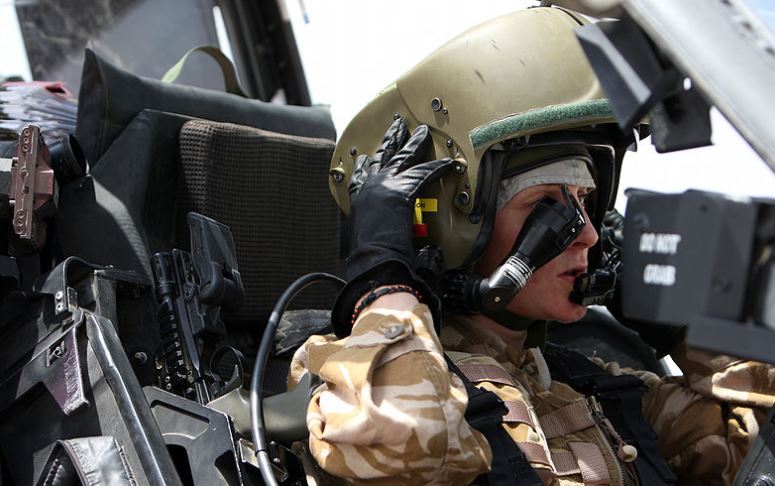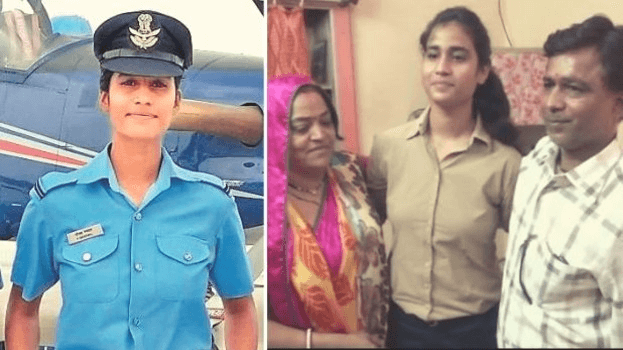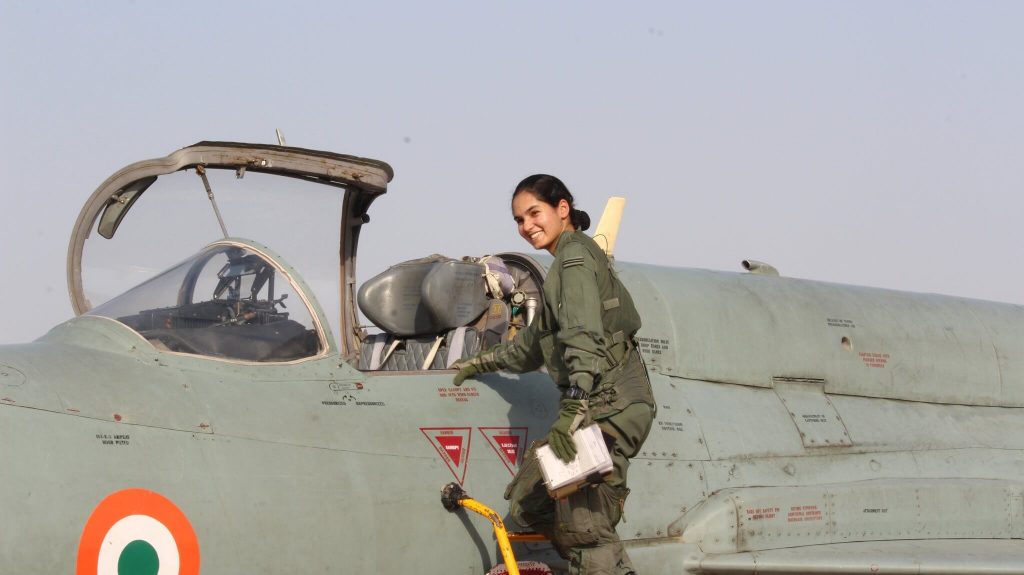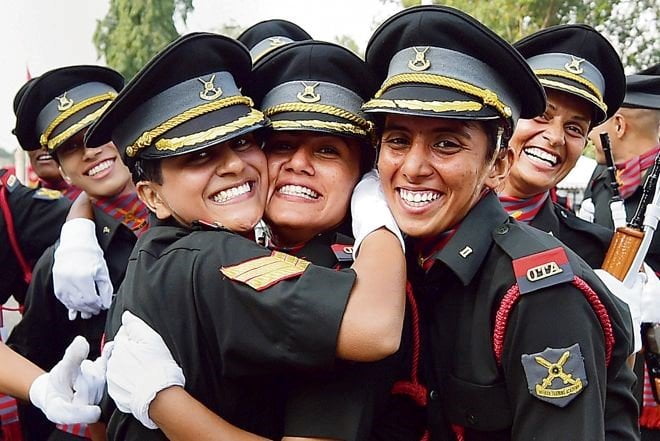
The Supreme Court finally accepted gender parity in the armed forces by paving the way for women permanent commission officers. This paves the way for the women officers in higher ranks as colonels, brigadiers and above. Presently, their employment would be restricted to the services and combat support arms in which they are commissioned, but subsequently, their induction into the combat arms may also be considered as a next step. The combat role in the Indian armed forces has for long been an exclusive domain of men. India will be among the few countries globally to break the gender barrier.
In the Indian armed forces, the gender gap remains high. There are 3650 women and 62500 men, as compared to the US armed forces, where there are 200000 women, approximately 20% of the force. Apart from medical and nursing service, the induction of women officers in other branches of the Indian Army commenced in 1992. Today they are part of Medical (AMC), Nursing (MNS), Education (AEC), Legal (JAG), Army Service Corps (ASC), Army Ordnance Corps (AOC), Engineers, Signals, Intelligence (INT), Electrical and Mechanical Engineers (EME). The induction of women soldiers has now commenced in Military Police (CMP) also. Presently, the women officers are inducted through the Short Service Commission (SSC) and usually served for 14 years. Permanent commission to JAG and AEC women officers was granted in 2008. In February 2019, the government granted a permanent commission to women officers in eight other streams of the Army. However, they will still not be permitted to serve in army combat units, like the infantry, mechanised infantry, armoured corps or artillery as no women entry is permitted in these arms as yet. As and when women entry to the combat arms is approved by the government, they would also be allowed to serve in combat arms. This has sparked a debate on the issue.

What do the opponents say?
The combat role would require tougher physical and tactical training standards than the current training standards for women in the army. Presently, the women officers have lower physical training standards during the service and are generally given softer appointments with due considerations to hygiene, sensitivities and privacy issues while accommodating them. Certain areas such as high-altitude areas, counter-insurgency areas, non-family field areas are not suited for women officers due to long periods of separation from the family, issues of motherhood responsibilities, pregnancy, domestic obligations, administrative issues like health, sanitation, fitness, difficult living conditions etc. These considerations may prove to be stumbling blocks for women occupying the positions in a combat role.
While accommodating women officers, the male officers’ tenures in difficult field stations have increased, in adjusting women officers for spouse postings, child care leave etc. This results in reduced time for male officers to be with family in peace locations, to attend to their family needs. If women officers are absorbed in combat arms also, the frequency of difficult area postings for male officers would increase exponentially. Even in countries like the United States, Israel, Australia, Russia, women are permitted in combat support, technical and administrative posts only. They are forbidden to be placed in direct ground combat with the enemy.

So far, the males have dominated the army due to the patriarchal set up of Indian society and the sense of militarized masculinity. Group cohesion is a very important aspect for combat soldiers. The male soldiers create bonds of brotherhood and comradery to promote group cohesion. They share their light-hearted jokes to release work tensions. However, the mutual comfort level between men and women colleagues is often very low. The presence of women makes the environment “formal and stiff”. They consider women to be intruding on their privacy. Fear of sexual harassment and abuse of women in the army is another cause of concern. Women often face retaliation when they do complain about the same.
The profession of combat arms is all about violence and brutality. To kill another human is not moral but in combat arms, a soldier is required to kill the enemy without guilt. Women by nature are non-violent and sober. This makes the environment of combat arms highly non-conducive and rough for women.
Some critics also state that due to our social fabric command by women would not be acceptable to the men soldiers. Most soldiers are men from rural backgrounds who are not mentally tuned to accept women officers in command and combat assignments. In India, man’s ego is larger than his capability. The women cannot be seen commanding men in the field. Hence, women commander in combat role would be a catastrophe.
If a woman is taken captive by insurgents/terrorists or as a Prisoner of War (PoW) by an enemy state, then it would become an emotive issue that could have an impact on society. Our neighbouring country does not respect or follow the international law for dealing with PoW. Mutilated bodies of Lt Saurab Kalia and his men handed over by Pakistan during the Kargil war 1999, is a case in point.
Many defence analysts feel that the armed forces have been constituted with the sole purpose of ensuring the defence of the country and all policy decisions should be guided by this overriding factor. All matters concerning the defence of the country have to be considered dispassionately. No decision should be taken which even remotely affects the cohesiveness and efficiency of the military. Concern for equality of sexes or political expediency should not influence defence policies.

What do the supporters say?
Gender should not be an issue as long as the women applicant is qualified for the position. The problem of the shortage of officers can be addressed by allowing women in a combat role. It would offer a talent pool and a wider choice to select the best person for the job. Although time would be required to facilitate women integrate into combat units, but allowing a mixed-gender force will keep the military strong.
Females work harder than men to establish parity and stand out for their work in the eyes of their counterparts. Women have proved their effectiveness in commanding positions. There are plenty of examples of women officers who stand as a testament to the same. Finally, it would lead to gender progressiveness.
As far as the battle of acceptance with the troops is concerned, it is felt that the soldier will accept any fair order and just both in spirit and action. For trained soldiers’ “acceptance” is not an option; they have undergone rigorous regimentation to accept orders from the command. Acceptance of women in all countries has not been smooth. However, every country has to mould the attitude of its society at large and male soldiers in particular to enhance the acceptability of women in the military.
In the Indian context, history bears the testimony of the fighting spirit of the female warriors of Guru Gobind Singh and the inspiring legend of Rani of Jhansi? Subhas Chandra Bose had created Rani Jhansi Regiment (RJR), comprising of female combat soldiers in Singapore in July 1943. These women soldiers were trained for deployment in the rugged jungles of Burma. Each of the RJR soldiers of the Indian National Army (INA), roughly 5,000 in number, is a case history of grit and determination of women in a combat role.
A professional soldier should be a person who takes on the responsibility for fellow soldiers by sharing and caring for them, can lead in the face of chaos and danger when a situation arises and must have moral and mental toughness in such situations. He should be an expert in the use of weapon systems and equipment, must remain committed to the defence of the nation and be bound by a strong ethical framework. Time and again, the women have demonstrated their physical, psychological and moral strengths in different situations.

Way forward
Induction of females in combat arms, combat support arms and services should be based on their abilities and not based on their gender. The armed forces should lay down minimum physical standards for combat arms, combat support arms and services irrespective of gender and recruit accordingly. The training for both women and men should be standardized to eliminate differentiation based on physical capabilities. The present system of different physical standards for female officers should be done away with.
We should first open the command positions for the females in the combat support arms and services, where they are presently being recruited and see how it works. I am confident that it will work well. The selection criteria should be the same as for the male counterparts without any bias. If found fit to command, then they are considered for the command appointments. The induction of women in combat arms should be considered at a later stage when the above experiment succeeds.
The armed forces should create additional administrative infrastructure like separate accommodation and toilets for the women to accommodate their specific needs. Administrative issues should not be cited as a barrier to women’s entry into the armed forces. The organisation should also ensure the modesty and dignity of the women officers by laying down strict rules and regulations to ensure no adverse incident occurs. Strict disciplinary action is taken against the defaulters indulging in sexual abuse.
Using the patriarchal nature of the society as an excuse to deny women their deserving opportunities should cease. The Indian society should be supportive of women being inducted into command and combat roles. To start with, an all-women combat company could be raised as an experimental case and its efficacy be studied in detail before any further decision is taken.
The final aim should be defence preparedness at a high level. The career opportunities for women need to be viewed keeping the final aim in focus. The bottom line should be that while ensuring gender equality, it should not weaken the fighting capability of the combat arms of the Indian army. The leadership in combat arms at each level, from detachment to highest formation, is laid on a bedrock principle of ‘Leading from the front which must not be compromised.
Finally, no decision should be taken which even remotely affects the cohesiveness and efficiency of the military. Concern for equality of sexes or political expediency should not influence defence policies.


Fantastic blog. A great read. I’ll certainly be back.